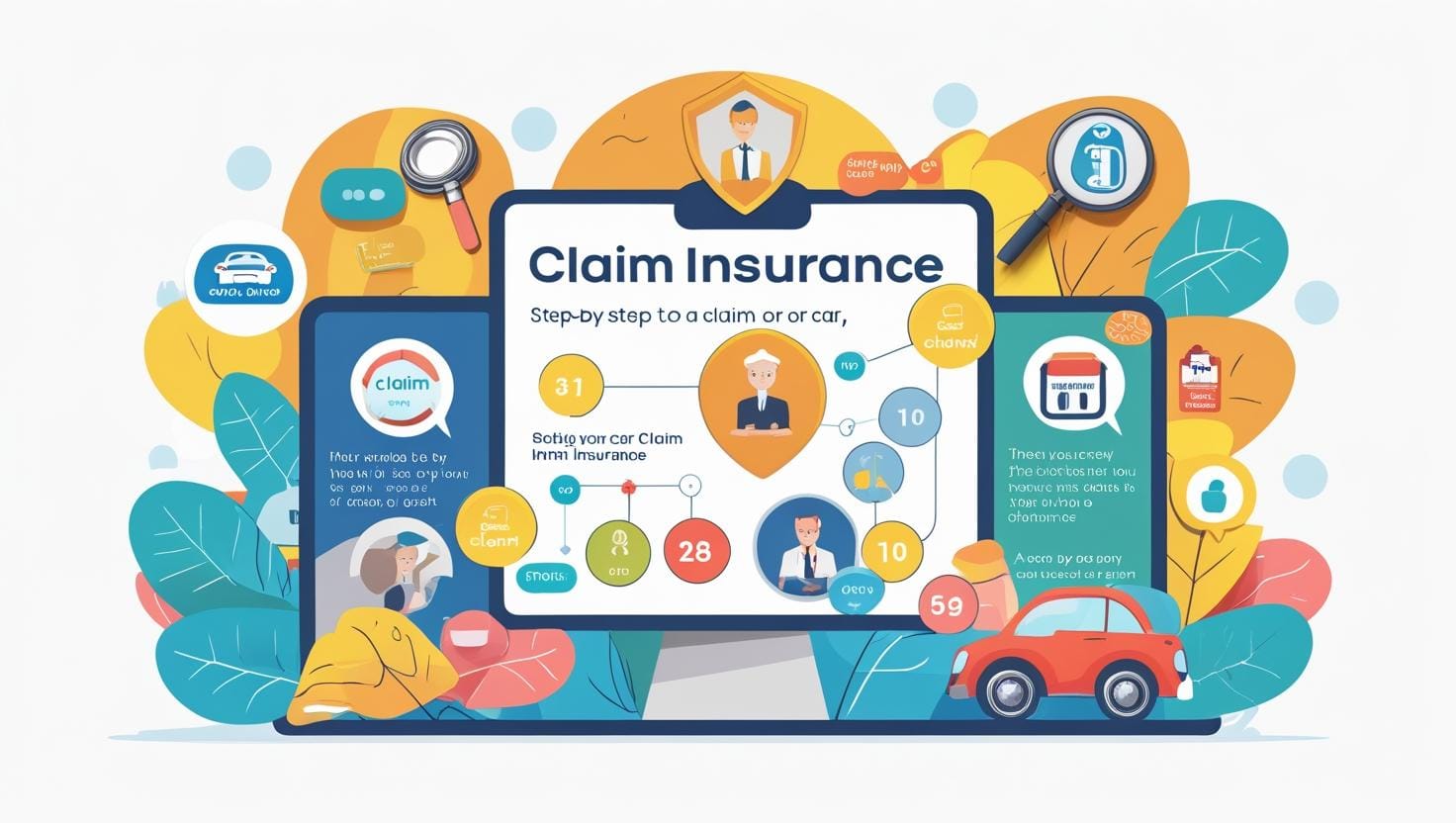How to Claim Insurance (Health, Term, or Car) – A Step-by-Step Guide
Claiming insurance shouldn’t feel like a mystery. This guide breaks down exactly how to claim health, life, or car insurance — step by step, without the jargon.

Insurance is that thing we buy, pay for… and hope we never have to use.
But when the time comes to actually file a claim, many people are confused, delayed, or worse — rejected due to missed steps.
⭐️ In this guide, we’ll explain exactly how to claim three of the most common types of insurance in India:
- 🏥 Health Insurance
- 🧾 Term Life Insurance
- 🚗 Car/Vehicle Insurance
All explained in simple steps — no legal jargon, no agent pressure.
🏥 1. How to Claim Health Insurance
📍 Scenario A: Cashless Claim (Planned or Emergency)
- Go to a network hospital (check your insurer’s website or card)
- Show your health insurance card at admission desk
- Fill out pre-authorization form (hospital will help)
- Hospital contacts the insurer for approval
- If approved, your bill is directly settled by insurer
🟢 You may still have to pay small charges like registration or non-covered items (gloves, masks, etc.)
📍 Scenario B: Reimbursement Claim
Used when:
- You go to a non-network hospital
- You didn’t get pre-approval
Steps:
- Pay full bill at hospital
- Collect all original documents:
- Bills, prescriptions, discharge summary, lab reports
- Fill claim form from your insurer’s website
- Submit claim via courier, email, or app (depends on insurer)
- Track status online; get reimbursed to your bank
🕒 Time limit: Usually 7–30 days from discharge
📄 Documents Needed for Health Claim
- Policy copy / ID card
- Hospital bills (original)
- Discharge summary
- Investigation reports
- Medicine bills + prescriptions
- Cancelled cheque (for bank credit)
🧾 2. How to Claim Term Life Insurance
This claim is made after the policyholder’s death, by nominee or legal heir.
🪙 Steps to File Term Insurance Claim:
- Inform the insurer as early as possible
- Fill the claim intimation form
- Submit required documents (see below)
- Insurer verifies documents and processes claim
- If all okay, payout is made within 30 days (as per IRDAI rule)
📄 Documents Required (Term Life Claim)
- Policy document
- Death certificate (original or notarized)
- KYC of nominee
- PAN + bank details of nominee
- Hospital records (if death was in hospital)
- FIR/post-mortem (if accidental)
🟢 Tip: Keep nominee details updated in your policy to avoid legal hurdles.
🚗 3. How to Claim Car/Two-Wheeler Insurance
📍 For Accidents (Own Damage Claim)
- Inform your insurer within 24–48 hours
- Don’t repair vehicle until insurer inspects
- File an FIR if it’s a major accident
- Insurer sends surveyor to inspect vehicle
- Take vehicle to authorized garage
- Submit bills + claim form
- Repair gets approved and settled
📍 For Third-Party Claims
- You need to file a case in Motor Accident Claims Tribunal (MACT)
- It’s a legal process; the insurer provides support
📄 Documents Needed (Car Claim)
- Policy copy
- RC of vehicle
- Driving license
- FIR (for theft/accidents)
- Photos of damage
- Estimate of repair
- Claim form
🟢 Theft? Submit police FIR + final untraceable report from police.
🧠 Common Mistakes to Avoid
❌ Not informing insurer within time
❌ Throwing away original bills
❌ Using a non-network hospital and expecting cashless
❌ Forgetting nominee details
❌ Not renewing your policy on time
💬 Final Thoughts
Insurance is not just paperwork — it’s protection, peace of mind, and family support when you need it most.
⭐️ But protection only works if you know how to use it.
Save this guide. Share it with your family.
And when the time comes — you’ll be ready, not stuck.
📢 Bonus Download:
📝 Claim Checklist PDF – What to do, documents to keep, who to contact
👉 Subscribe to Bitveen to get it in your inbox!
⚠️ Disclaimer:
This article is for educational purposes only and does not constitute financial or legal advice. Always read your policy documents and consult your insurer.
